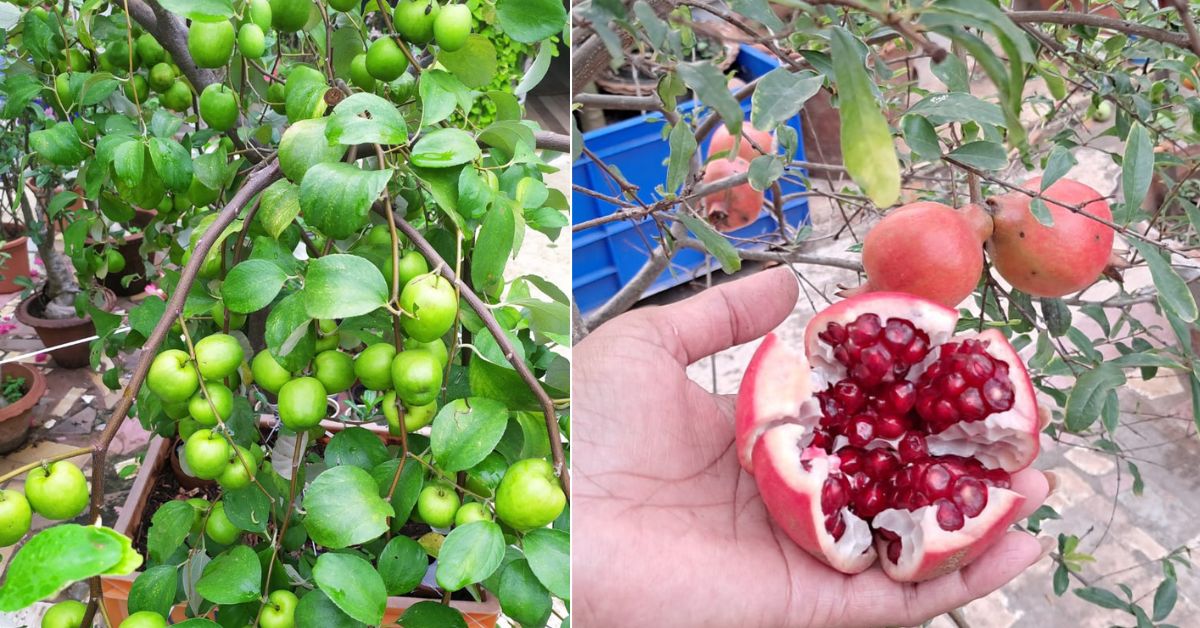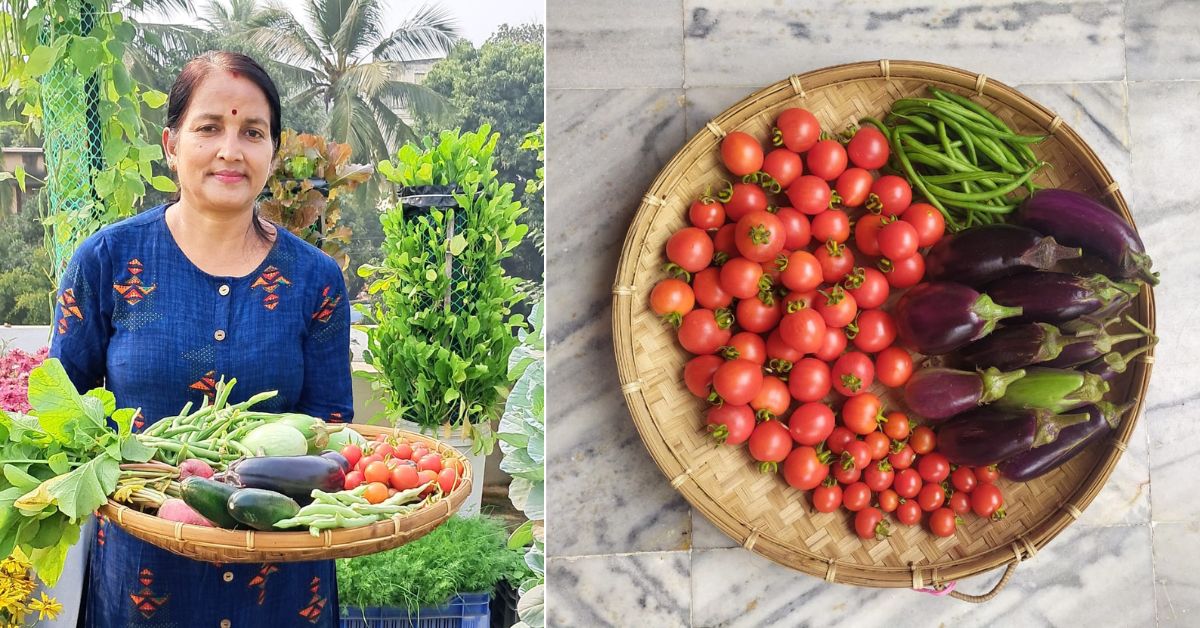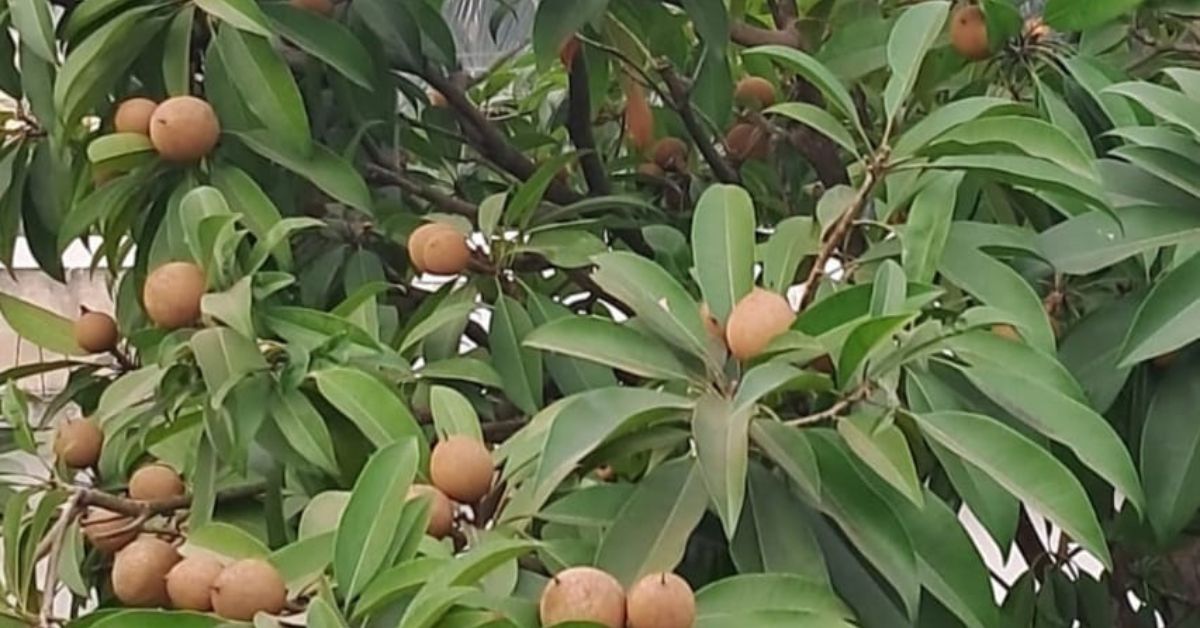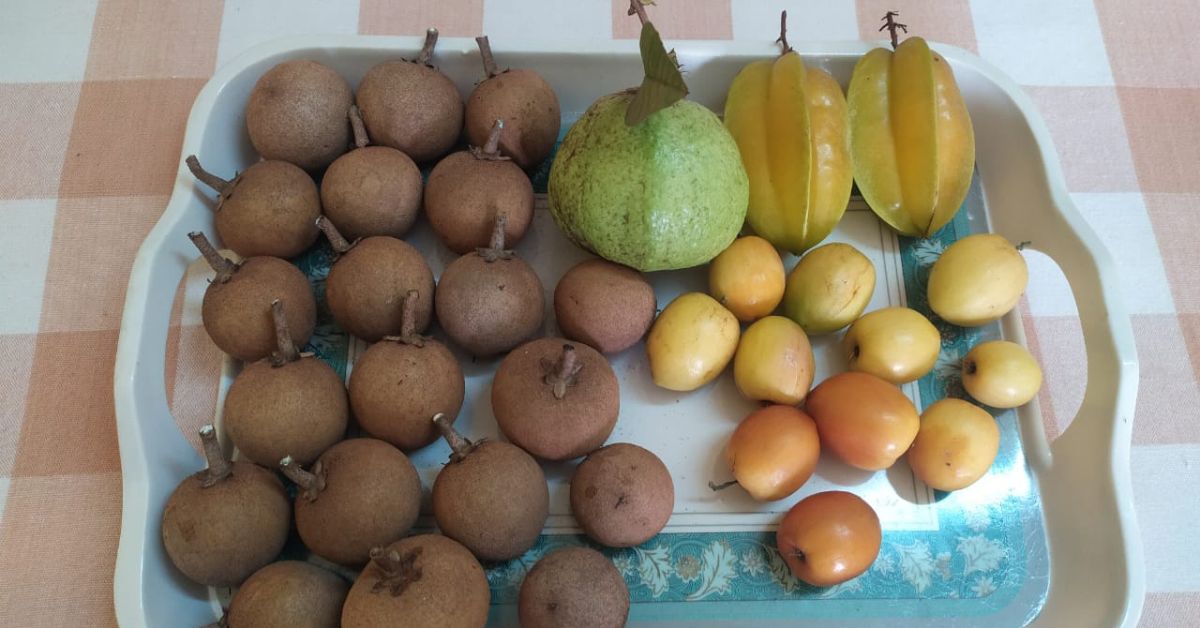Jayanti Sahoo’s day starts with harvesting guavas, mulberries, chikoos, and pomegranates from her lush green rooftop garden.
“These days, people put chemicals to artificially ripen fruits. Fruits are coated with wax and chemicals to make them glossy. We are blessed to eat fruits that are completely chemical-free and organically grown. Our fruits are comparatively sweeter than those available in the market,” she says as I prepare to ask Jayanti all about her journey that led to her turning her very home into a mini jungle.
Her 350 sq ft terrace, along with her three-storey house covering a total area of around 1,500 sq ft, is thriving with a diverse array of plants. “There is no vacant place left in my home where I could add more pots. I wish I had more space,” she laughs.
Jayanti, now 56 years old, narrates that it was during her childhood she took a keen interest in gardening. Growing up in Bhubaneswar, Odisha, a young Jayanti lived along with her six siblings and parents.
“All of us lived in a small home. My father would grow fruits and vegetables in the backyard and we helped him in gardening. We would be very excited to fetch water from the well and water all the plants together. He would teach us how to take care of plants. It was fun to be in the garden,” she recalls.
This piqued her interest in gardening and her desire to create a small garden of her own. “My father would not grow flowering plants. But I always desired to grow roses and rajanigandha (tuberose). So, when I grew up, I set up a small garden of roses and other flowers. My father would bring guests to my garden and proudly say that this was his daughter’s garden,” she smiles.

In 1989, when the BSc graduate got married, she took her gardening interest to her husband’s home along with her clothes and jewellery! “My husband’s place did not have many plants except bananas and drumsticks. I started planting flowering plants like marigolds and bougainvillaea,” she says.
Once, Jayanti visited an offline exhibition where she was introduced to the concept of grafting. “I saw trees like mangoes, oranges, and chikoos were grown in a pot! Before this, I had only seen these trees on large farms. Unlike them, these fruit trees were just 5 to 8 feet in height, but they were yielding fruits. I was eager to grow such fruit trees at my home,” she adds.
Jayanti’s quest led her to create a mini jungle on her terrace and in her house. Along with seasonal vegetables like brinjals, cucumber, okra, spinach, tomatoes, radish, and more, she cultivates 17 kinds of fruit trees — including guavas, pomegranates, oranges, cherries, star fruit, white jamun, mulberries, apple bear, water apple, mangoes, and chikoos on her terrace.
“In all, I grow flowers, fruits, and vegetables in my house spread across a total area of about 1,500 square feet including the terrace and balconies,” she reiterates.
In this article, Jayanti shares secret tips and techniques that have helped her to grow fruits in her rooftop garden, which can help you too.

Grow your own fruits with these 8 tips
1. Place the fruit trees strategically
As per Jayanti, urban gardeners should first ensure a proper drainage system on the terrace so that it does not absorb excess water.
“Secondly, keep your pots such that they are placed above the beams and walls of the rooms that are below the terrace. This will ensure that the weight of trees is balanced and the foundation of the house does not get damaged,” she says.
2. Upcycle discarded fish crates
Instead of large pots, Jayanti plants fruits in fish crates of 27*17*12 inches. “I purchase discarded fish crates at lower prices in the fish market. I make holes at its bottom and then add the soil mixture. These fish crates are very sturdy. I am still using fish crates that I bought 20 years ago,” she adds.

3. Prefer grafted saplings
“Earlier, people would grow fruits from seeds, but this process takes five to seven years to give yield. In contrast, grafted plants give produce within a year. Initially, I plant the sapling into a small pot of say 15 inches before transferring it into the fish crates. After about a year, the plant will be root-bound enough to be shifted into a comparatively large fish crate,” she says.
4. Prepare the right soil mixture
Jayanti says preparing a perfect soil mix for pots is an extremely important step as its components act as true boosters for fruit trees that are typically grown in large farmland.
“When you grow fruit trees on the terrace, you should prepare a lightweight potting mixture. Mix 30 percent garden soil with 30 percent cow dung compost, 30 percent cocopeat, 5 percent of neem khali (cake) powder, and 5 percent of bonemeal powder. Before transferring the mix into the pot, place a thick layer (4-5 inches) of dried leaves on the pot which will turn into compost later on,” she suggests.
5. Add liquid fertiliser to boost growth
“When grown on a farm, trees take nutrients from the soil, but when we grow them in pots, we need to provide them with additional nutrients regularly,” says Jayanti.

“To provide additional nutrients, take 1 kg mustard cake and 250 grams of neem khali powder and mix it in 5 litres of water. Stir it and then keep it under shade for five days. Mix 1 litre of this liquid fertiliser in 10 litres of water and give the diluted fertiliser to the plant every 15 days. This liquid fertiliser helps boost the flowering and fruiting in the trees,” she adds.
6. Deal with pests early on
Jayanti regularly sprays neem oil to control pest and insect attacks. “Usually, I handpick bugs from plants and remove leaves where they lay eggs. I have also used sticky fly traps to control fruit flies,” she says.
7. Know when to prune trees
In order to keep getting good yields, Jayanti advises urban gardeners to keep pruning trees every two to three years. “If you avoid pruning, then you’ll start getting fruits that are smaller in size. Pruning helps maintain tree size and maximise fruit quality,” she says.
8. Provide additional nutrients for rootbound trees
“After three to four years, urban gardeners should dig out a thick layer of soil (say 3-4 inches) and replace it with cow dung compost, bonemeal, and neem khali powder. Place a thin layer of soil above this and then water the soil. This will help you get good-sized fruits in the long run,” she shares.
Jayanti’s techniques have helped her get sufficient fruits for the past three decades. She now eagerly awaits to harvest mangoes from her garden!
For the homemaker, gardening is more than a fun hobby. “It brings me immense mental peace and contentment. It is part of my everyday routine. My entire day goes by taking care of their nutrients and protecting them from diseases and pests. I raise these trees like my children,” smiles Jayanti.
Edited by Pranita Bhat; All photos: Jayanti Sahoo.
No comments:
Post a Comment